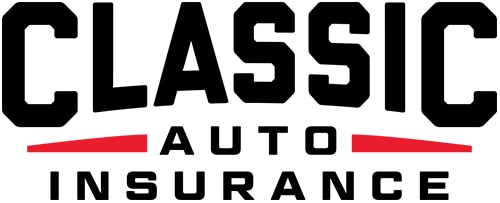The Mazda Motor Corporation has developed many stunning and innovative vehicles since the company began manufacturing cars in 1960. One of the company’s most groundbreaking cars was the Mazda Cosmo Sport, which featured a rotary-powered engine.
The company began developing its Wankel rotary engine in the 1960s to distinguish itself from other Japanese auto manufacturers, ultimately leading to the creation of the Mazda Cosmo.
Mazda sold the Mazda Cosmo — known as the Cosmo Sport 110 internationally — from 1967 to 1995, and its creation left an important mark on automotive history.
History of the Mazda Cosmos
The Mazda Motor Corporation opened its doors in 1920, but it was originally called the Toyo Cork Kogyo Company, and it produced corks in Hiroshima. Over the run of its first few decades, the company manufactured many different types of products, such as weapons, auto rickshaws, and machine tools.
The company pivoted to focus on vehicles in the early 1960s, with its first passenger car being the 1960 Mazda R360. This Kei car was a two-door, four-seat coupé with an RR layout and 356 cc V-twin engine.
Mazda’s venture into passenger cars came during a time in which the Cold War was heating up between the Soviet Union and the United States and its allies. Japan sided with the United States in the Yoshida Doctrine of 1951.
This period was also marked by many technological innovations as the two competing sides engaged in the Space Race and developed groundbreaking technologies. At the same time, the Mazda Motor Corporation wanted to enhance its image and make a splash in foreign car markets, a feat that other Japanese manufacturers had already accomplished, including the Toyota Motor Corporation and the Honda Motor Company.
The company decided that it needed innovative vehicle technology to grab the public’s attention, so it focused on developing a Wankel rotary-powered engine.
The Mazda Cosmo Sport 110’s Rotary Engine
Felix Heinrich Wankel first developed the idea for the Wankel engine in 1951, and the German engineer completed his first working prototype in 1957. Although his prototype was impressive, it was far from ready for mass production. Mazda and other companies obtained the rights to develop and use Wankel’s original design.
Mazda got to work developing their Wankel engine in 1961, but the company suffered from years of problems and setbacks. The primary issue with the engine was that it created chatter marks on the rotor housing’s inner walls. After years of struggling to fix this issue, Mazda’s engineers developed seals made from aluminum-infused carbon that protected the rotor housing.
Most companies that obtained the rights to develop a Wankel engine ended up abandoning the idea due to its plethora of problems. But Mazda and the West German company NSU Motorenwerke successfully developed rotary-powered engines for their vehicles.
Mazda first introduced its phenomenal rotary-powered engine with the 1964 Cosmo Sport, which the company debuted at the 1964 Tokyo Motor Show, which was only a month before the 1964 Tokyo Summer Olympics.
The vehicle’s name was a direct reference to the Space Race unfolding between the United States and the Soviet Union, an important symbol for pioneering innovations.
The 1967 Mazda Cosmo Sport
Three years after Mazda first showcased its Wankel engine at the 1964 Tokyo Motor Show, the company introduced the first Cosmo available to the public — the 1967 Mazda Cosmo Sport. This remarkable vehicle established Mazda as the world’s leading Wankel engine producer.
The 1967 Mazda Cosmo Sport featured a 0810 two-rotor engine with 982 cubic centimeters (under a liter) of displacement that produced 110 horsepower. Because the engine was only 982 cubic centimeters, owners saved money on taxes in Japan because the country featured a tax penalty for those with an engine over one liter.
Additionally, the car’s engine featured a Hitachi four-barrel carburetor and an ignition design with dual distributors and two spark plugs per chamber. With this peculiar ignition system, the engine could perform 7,000 revolutions per minute. The vehicle also featured a four-speed manual transmission.
The car had a length of 163 inches, a width of 62.8 inches, and a height of 45.9 inches. It also had a curbside weight of 2,072.3 pounds and 14-inch wheels. The car’s exterior also featured an Italian-styled nose with covered headlights and a long tail.
The car sported a coil-sprung, double-wishbone front suspension with a DeDion rear axle and an anti-roll bar, and it had disc brakes secured to the front axle. Finally, the vehicle’s rear suspension was a leaf-sprung de Dion tube.
With the car’s many impressive specifications, it boasted a 16.4-second quarter mile reaching a top speed of 115 miles per hour.
Legacy of the Mazda Cosmo Sport 110
Interestingly, the Mazda Cosmos has received much attention in recent years due to its most famous owner — Jay Leno. The comedian and former host of The Tonight Show owns a gorgeous 1970 Series II Cosmo that appeared on the series My Classic Car. The cream-colored Mazda Cosmo sports an updated RX-7 12a rotary engine rather than a Cosmo 982cc 0813 engine because its original engine was too corroded to function.
Although Mazda halted production on the Cosmo back in 1996, the company continued constructing rotary-engine-powered vehicles with the Mazda RX-7 and Mazda RX-8, but the manufacturer halted production on its final rotary-engine car in 2012.
Fortunately, Mazda is now bringing back the remarkable rotary engine with its 2023 MX-30 R-EV, an exciting new electric vehicle that Mazda revealed at the Brussels Motor Show on January 13, 2023. It’s not yet clear when this vehicle will become available in the United States, but this innovative car could lead to additional rotary-engine-powered Mazdas.
Get the Best Insurance For Your Mazda Cosmo Sport 110
Whether you’re driving the historic Mazda Cosmo Sport 110 or another breathtaking classic car, you need protective insurance that will keep your vehicle on the road for years to come. Classic Auto boasts nationwide roadside assistance with flatbed towing, agreed value reimbursement, and more. Contact Classic Auto Insurance today at 888-901-1338, or click here for an instant quote.





